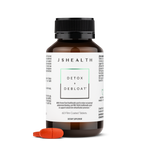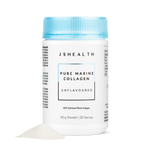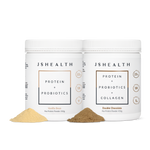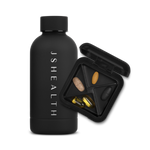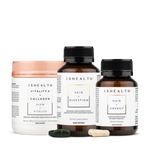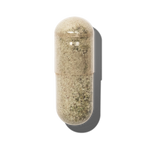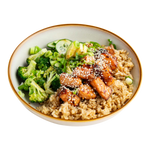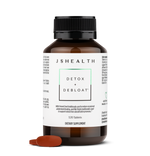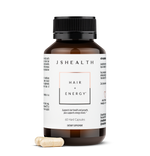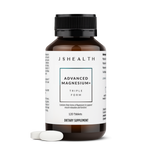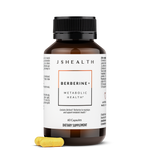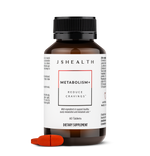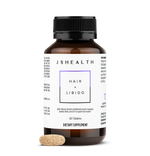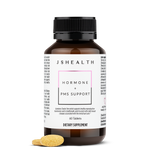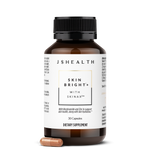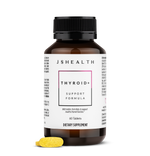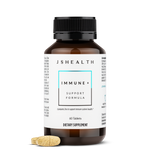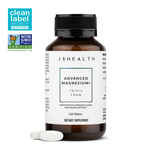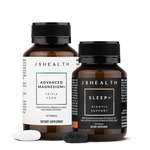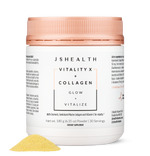25% OFF SUBSCRIPTIONS!*
6 Foods Known To Naturally Give You Energy
The foods we choose to nourish ourselves with serve as the fuel we provide to nurture and care for our bodies. When we need more energy throughout the day, we turn to food for a fuelling session. Some foods are more efficient and long-lasting when providing energy for the body to use compared to other foods.
When it’s time to plan a nutritious, well-balanced meal, these are the most important things to consider when planning a plate to support energy levels.
What Types of Foods Give Us Energy?
The idea of eating the same dozen foods every day can be boring and unsustainable. True nutrition comes from eating a wide variety of foods and having a large rotation of wholesome go-to meals and snacks to add to the weekly menu.
Rather than focusing on a single food, focus on larger groups of foods and choose the most delicious options from that group.
Carbohydrates
Healthy carbohydrates are necessary for energy production, heart health and digestive health — making them a key player for your overall wellness. Complex carbohydrates like whole grains significantly boost the satiety factor of a meal while acting as a powerful source of energy.
Vitamin Energy Boosters
B vitamins play a crucial role in energy production, with vitamin B6 and vitamin B12 playing the most significant roles. Our bodies need vitamin B12 to create healthy red blood cells that circulate oxygen. Oxygen is just as important as nutrients for the well-being of our bodies. If our bodies are getting enough oxygen, we may feel fatigued as our bodies struggle to conserve energy.
Vitamin B12 also helps our bodies convert carbs into usable energy. Carbohydrates naturally contain a form of glucose called adenosine triphosphate (ATP), and ATP provides energy to our cells. Vitamin B12 is necessary for converting glucose into ATP. Without it, our bodies could not efficiently convert food to energy.
Mineral-Rich Foods
Minerals like magnesium, potassium and manganese naturally occur in many healthy foods. These minerals are important in regulating our metabolisms and supporting energy levels throughout the day. Foods like mango, pineapple, papaya and apricot are rich in minerals.
Bananas are essentially a superfood, and they contain all three essential minerals to support a healthy metabolism.
Fatty Acids
Fat is the most readily available source of energy, but not all fats are created equal. Some fats, like saturated fats, can raise cholesterol levels, damage heart health and contribute to obesity. The quality of the fat in your diet is essential.
Omega-3 fatty acids are heart-healthy fats that also work to protect and support the brain. Omega-3 fatty acids can be found in fatty fish like mackerel, salmon and sardines. The best plant-based sources of omega-3 fatty acids are nuts, seeds and avocados.
6 Foods We Can Eat for Energy
Energy comes from a balanced plate (or bowl). Focus on incorporating a wide variety of whole foods into every meal or snack for complete nourishment. Swap out ingredients based on what seems tasty at the moment. Remember: it’s important to enjoy the foods we eat.
We deserve to honor our cravings, and it’s possible to do so while still prioritizing our overall well-being.
1. Brown Rice Bowls
Brown rice is a complex carb that serves as the perfect base for a satiating bowl. Adding in veggies and lean proteins will round out the dish. Try a brown rice bowl with salmon, avocado, carrots and cucumbers to satisfy sushi cravings. Onions, bell peppers, ground turkey and mango salsa can create a nutrient-packed bowl full of traditional taco flavors.
2. Fruit and Nut Trail Mix
It’s not a coincidence that trail mix is commonly associated with hiking. It’s easy to carry, and it also packs a lot of energy into a relatively small serving size. Nuts and seeds like cashews, walnuts and pumpkin seeds work to provide an energy boost, while dried fruits like blueberries and cranberries contribute valuable vitamins and antioxidants.
The natural sugars of fruit and nuts can make trail mix feel like a treat, but a few semisweet dark chocolate chips won’t hurt.
You can enjoy trail mix on its own or use it as an add-in for Greek yogurt, frozen yogurt or oatmeal. It’s a great way to add texture and pack in additional nutrients to plain foods.
3. Hummus and Whole Grain Pita Chips
Hummus is an excellent source of plant-based protein and healthy fats. It can be dressed up with garlic, herbs, roasted red peppers, freshly squeezed lemon — essentially anything that sounds tasty.
Many people dip veggies in hummus, but complex carbs like whole-grain pita chips can make hummus feel less like a snack and more like a complete meal. You can serve it with a side salad to balance the plate.
4. Sweet Potatoes
Sweet potatoes are a versatile ingredient that can be served as a main or side dish. They’re lower on the glycemic index than white potatoes, meaning they can help keep blood sugar levels stable throughout the day.
We all desperately could use a bowl of french fries on occasion. Baked sweet potato wedges are a delicious alternative to fried white potatoes. They scratch the same itch in a much more balanced way. Sweet potatoes can also be used instead of white potatoes for stuffed jacket potatoes. A sweet potato full of black bean chili is hearty, satisfying and packed with protein.
5. Lentil Stew
Lentils are an excellent source of plant-based protein and minerals. Lentil stew is one of the easiest things to make when there’s a fridge full of produce that needs to be used up. Almost any vegetable works well in a lentil stew. Toss in carrots, tomatoes, onions and sweet potatoes for a traditional lentil stew that boasts the same nourishing comfort as a Sunday roast.
Lentil, tomatoes, okra, eggplant and masala work together to create a nourishing vegan curry over brown rice or naan bread. Combine lentils with peanut butter, sweet potatoes, harissa and ginger to make a rich and hearty peanut stew — the possibilities are endless.
6. The Perfect Sandwich or Wrap
One of the easiest ways to eat a wider variety of vegetables, protein and complex carbohydrates is by making sandwiches or wraps. Sandwiches and wraps are hearty, filling foods that offer ample opportunity to experiment with new flavors and ingredient combinations.
Start with a whole grain or fermented base, like whole grain pita pockets or sourdough bread. These healthy carbohydrates provide our bodies with quickly accessible energy. Then, build a veggie base. Lettuce, tomato and onion are standard for sandwiches. Swapping out iceberg lettuce for a more nutrient-rich green like spinach, rocket or kale can add more micronutrients into the mix.
Lastly, choose a nourishing, healthy protein. Processed lunch meats from the deli counter are notoriously high in sodium, which may contribute to bloating and harm heart health. There are countless ways to make a sandwich while avoiding processed meats.
Sandwiches and wraps are an excellent way to use up leftover roasted chicken or turkey. Smoked salmon is a delicious pescatarian protein source for sandwiches. Plant-based alternatives like black beans, tofu or chickpeas also work well.
What About Caffeine?
Caffeine might seem like it gives us energy, but it’s a little more complicated than that. Caffeine is a stimulant, and stimulants work by triggering a response in our brains. It mimics the “fight or flight” response we might get when we’re anxious. It raises our alertness without nourishment, which means its effects aren’t sustainable. We need to keep drinking more caffeine to sustain the effects.
While no food is bad and everything can play a role in a healthy diet, it’s important not to rely on the temporary effects of stimulants caffeine to promote and regulate normal energy production. It’s not necessary to skip a morning green tea latte or a cup of coffee if the mood strikes. Think about what can be served with that beverage for sustained energy that will last until lunch.
It can also be helpful to rethink the way caffeinated beverages are meant to be enjoyed. A lightly sweetened or unsweetened morning beverage will have less of an impact on blood sugar levels, reducing the risk of a sugar crash later in the day.
Many people find that sugary energy drinks contribute to the feeling of a sugar crash, which may make them an unsuitable substitute for something like naturally caffeinated tea.
The Wrap-Up on Energy Boosting Foods
It doesn’t have to be difficult to prioritize natural energy when preparing a meal. Plenty of whole foods contain everything our bodies need to maintain a healthy metabolism and stay energized.
To supercharge your day and support your energy levels, try the JSHealth Vitamins AM+ Stress + Energy Levels formula. It’s the perfect addition to your morning ritual!
Sources:
Omega-3 Fatty Acids - Consumer | National Institutes of Health | Office of Dietary Supplements
Low-glycemic index diet: What's behind the claims? | Mayo Clinic
How Can I Choose a Healthier Lunch Meat? | Cleveland Clinic
Caffeine: How Long it Lasts, How Much & Withdrawals | Cleveland Clinic
